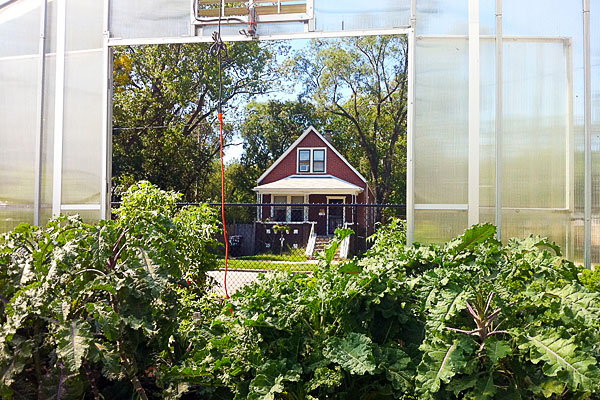
Long known as a city of neighborhoods, Chicago is rapidly becoming a city of neighborhood farms. On top of the countless backyard and community gardens that dot the city, several larger-scale agricultural ventures are underway.
The latest to announce plans is the New York-based BrightFarms, which, as Crain’s reported last week, will build a 45,000-square-foot greenhouse atop a commercial building in Roscoe Village. It joins several other similar endeavors, among them Iron Street Farm, a seven-acre farm in Bridgeport; a plan to build an orchard of dwarf fruit trees in Logan Square; and another plan to create a working vineyard on a Washington Park site. In addition, a group called Growing Power has three other urban farms similar to its Iron Street project.
“The present system of agriculture doesn’t [help] you understand where and who your food comes from,” says Paul Lightfoot, CEO of BrightFarms. “But if it’s grown in your own neighborhood, there’s an almost emotional connection to your food and your food source. People had that 100 years ago, and we’re rediscovering it now.”
And there’s an added bonus: “People have discovered that a tomato should taste like something, and you lose that when it rides in a truck for a week from Mexico,” Lightfoot says. That’s not a problem when the tomato has traveled only a few blocks.
BrightFarms has been active in New York since 2006 and is now expanding into Bucks County, Pennsylvania, and St. Paul, Minnesota, as well as Chicago. But Lightfoot says that Chicago is particularly ripe for urban farming. “Mayor Daley did groundbreaking things with green roofs,” he says, “and Mayor Emanuel has [boosted] the enthusiasm. There’s not a better market for this kind of thing than Chicago.” (BrightFarms also has a sentimental tie here: its marketing director, Kate Siskel, is the daughter of the late Chicago Tribune film critic Gene Siskel.)
Though a previous generation or two of city dwellers wanted nothing to do with farms, “now we know we need [them] around us,” says Dave Snyder, the head of the Chicago Rarities Orchard Project, which intends to grow about 40 fruit trees in Logan Square. “Farms offer certain things that we lack in day-to-day urban life.” Along with a connection to food sources, he says, they also provide open space as a relief from density.
The fifth of an acre where Snyder’s orchard will go is a piece of former CTA land at Logan Boulevard and Milwaukee Avenue that the Chicago Park District deemed too small for a park. But in a neighborhood that has the city’s second-smallest amount of green space per capita, keeping the plot of land as some form of open space was a must. The city is developing the piece of the property that faces Logan as a mini-plaza; the part that runs down Milwaukee will contain the orchard. Site preparation begins next spring, and Snyder says that the trees will start producing fruit in a few years.
Not all the proposed projects will take root. But Snyder, who is also the rooftop farmer at the innovative Uncommon Ground restaurant in Rogers Park, believes that the urban farm movement may subtly transform Chicago. “I’m glad people are trying all these things, even the poorly formed projects and the wrong-headed ones,” he says. “Because in ten or fifteen years, the ones that [survive]—when you add them all up and include the community gardens and things, we’ll be making hundreds or thousands of meals within the city. And it will be gorgeous.”



